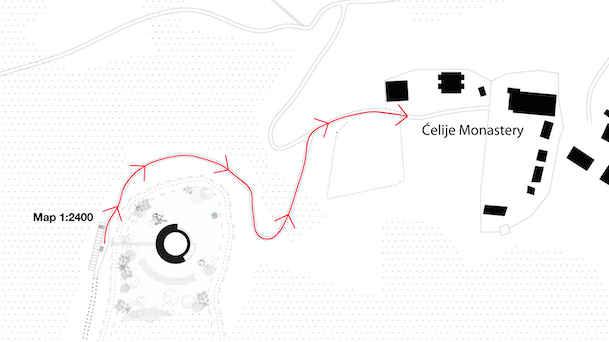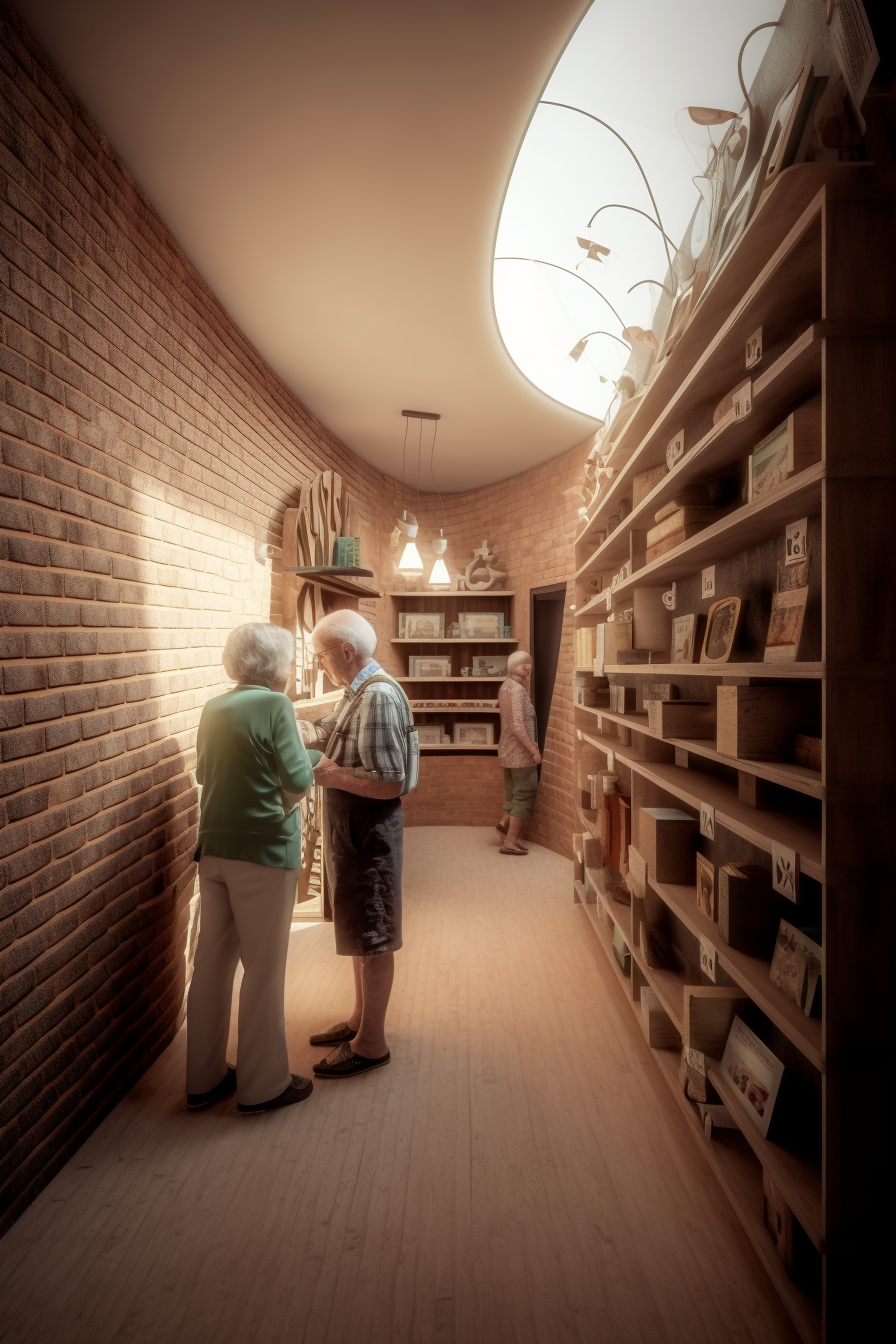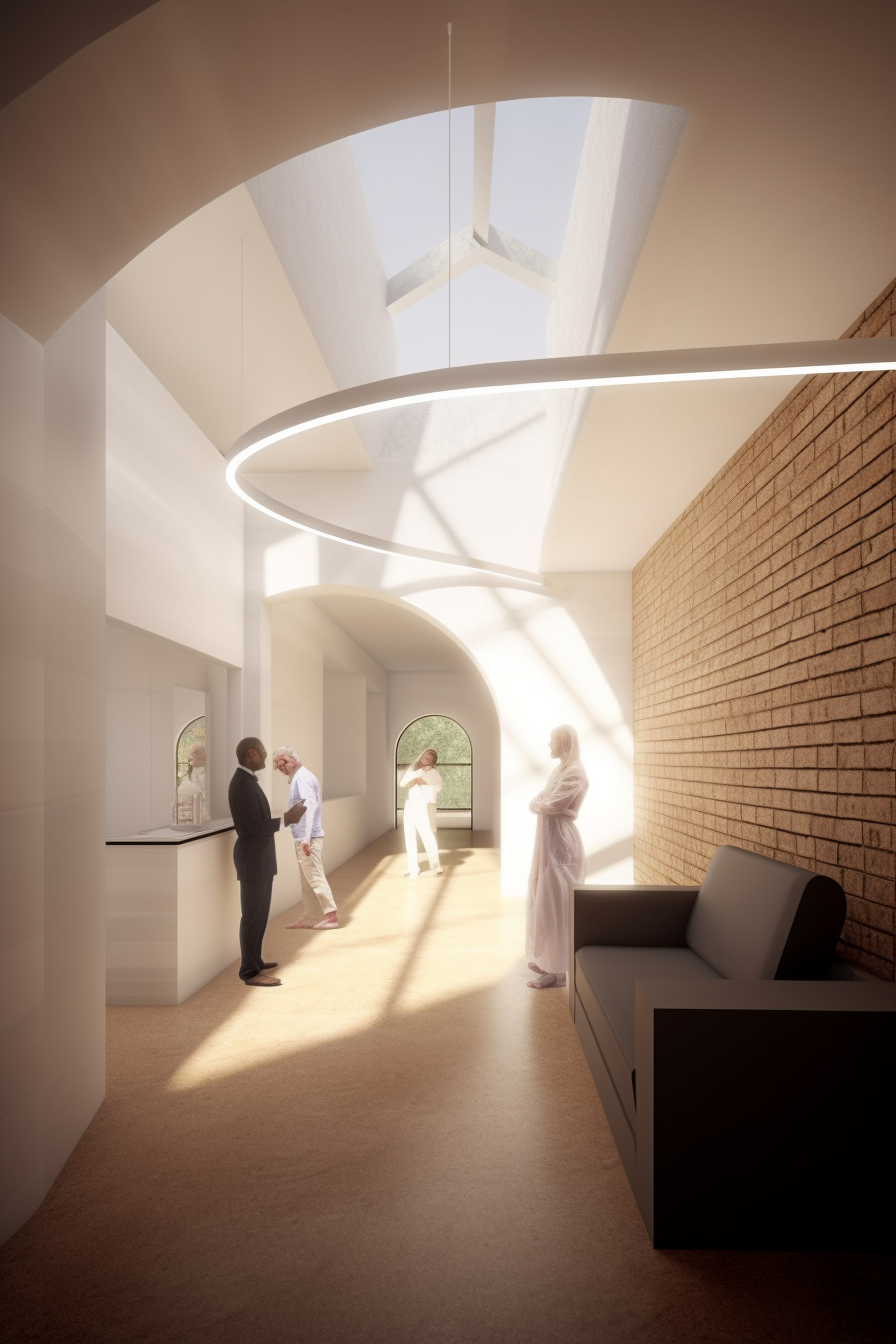
Design Principles
1. Create a space where every room is closely connected to nature
2. Make a private outdoor living room the heart of the building
3. Bring in architecutral elements from sacral architecture
The building would become a retreat that celebrates life with a poised calm.

Bringing the outside in
Hospice center was designed connects visitors with nature. It is located in central Serbia, in a unique area surrounded by the river Gradac, with fresh, clean air and greenery. This location very still and quiet, except for the sound of the flow of the river, declaired the cleanest body of water in Serbia. An additional sense of repose and intimacy where achieved by making the building introverted.



Connection to Celije
The proximity of the Orthodox monastery of Celije was the reasoning behind this location. Being so close to the hospice allows the existing sacral building to take on the purpose of a spiritual center therefore meeting some of the most important needs for visitors.


The Open Circle Plan
The plan follows the imperfect and unfinished form of a circle, mimicing the way we look back at our lives at the very end of them. The circle is divided into public and private space by the entrance area. On one side there are common rooms, set in an open space concept, with the kitchen and toilets separated by walls. At the end of the arc is the entrance to the glasshouse, engaging visitors in maintaining their gardens during the colder period of the year. On the other side of the entrance hall are linearly arranged rooms for private purposes, such as a library with a reading room and exhibition space, toilets for users, the nurses room and a therapy room.


Social Health
The retreat offers a diverse set of activities for the visitor. The hospice aims to let those with limited time left enjoy this precious resource, either with loved ones or others going through a similarly difficult time. The kitchen is a the heart of the communal area, and the hospice offers a rich menu for those with special dietary needs. The traditional meaty Serbian diet is given a plant-based twist, as vegetables and fruits from the garden are used to garnish the tasty food.

Spiritual Health
Celije also gives the opportunity to exhibit an artefact – a poem or a drawing- as a final goodbye. These are displayed in the library and exhibition space that is open to all visitors.

Physical Health
Therapy and physical care are part of the services at the hospice. We’ve created rooms that bring a sense of home to these emotional times, allowing visitors to be comfortable in the time and space they are in.
A house of Brich and wood
The structure to be made of brick, which additionally links it to the monastery complex and create the impression of a fortress for the most fragile. As a counter-point, the entrance hall is lined with glass walls, so that it allows views from the entrance to the inner courtyard.
